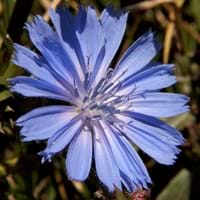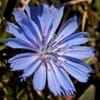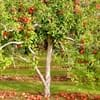Life Span
Perennial
Perennial
Type
Flowering Plants, Shrubs, Vegetable
Flowering Plants
Origin
Mediterranean
Not Available
Types
Belgian Endive, Red Belgian Endive, Curly Endive (a.k.a. Frisee), Escarole, Radicchio (Chioggia) and Radicchio (Chioggia)
Aconitum napellus
Habitat
Grassland, Mediterranean region, Wild
Damp shady woods, meadows
USDA Hardiness Zone
3-9
12-15
Sunset Zone
A1, A2, A3, H1, H2, 1a, 1b, 2a, 2b, 3a, 3b, 4, 5, 6, 7, 8, 9, 10, 11, 12, 13, 14, 15, 16, 17, 18, 19, 20, 21, 22, 23, 24
21, 22, 23, 24
Habit
Clump-Forming
Oval or Rounded
Minimum Height
Not Available
Minimum Width
Not Available
Flower Color Modifier
Not Applicable
Not Available
Leaf Color in Spring
Green
Not Available
Leaf Color in Summer
Green
Not Available
Leaf Color in Fall
Green
Not Available
Leaf Color in Winter
Green
Not Available
Leaf Shape
Oblong
Compound
Plant Season
Summer
Not Available
Sunlight
Full Sun, Part sun
Not Available
Growth Rate
Medium
Very Slow
Type of Soil
Loamy, Sandy
Not Available
The pH of Soil
Acidic, Alkaline, Neutral
Not Available
Soil Drainage
Well drained
Not Available
Repeat Bloomer
Yes
Not Available
Tolerances
Not Available
Not Available
Where to Plant?
Ground
Ground
How to Plant?
Seedlings
reseeds
Plant Maintenance
Medium
Medium
Watering Requirements
Keep the ground moist but not water-logged, Prefer drip-irrigation instead of Over-head watering, Requires regular watering, Requires watering in the growing season
Do not let dry out between waterings
In Summer
Lots of watering
Lots of watering
In Spring
Moderate
Moderate
In Winter
Average Water
Average Water
Soil pH
Acidic, Alkaline, Neutral
Not Available
Soil Type
Loamy, Sandy
Not Available
Soil Drainage Capacity
Well drained
Not Available
Sun Exposure
Full Sun, Part sun
Not Available
Pruning
Cut or pinch the stems, Prune prior to new growth, Prune to stimulate growth, Remove dead or diseased plant parts, Remove deadheads
Remove damaged leaves, Remove dead branches, Remove dead leaves
Fertilizers
All-Purpose Liquid Fertilizer
All-Purpose Liquid Fertilizer
Pests and Diseases
Aphids, Loopers, Root rot, Viruses, Worms
Red blotch
Plant Tolerance
Drought
Drought
Flowers
Yes
Not Available
Flower Petal Number
Not Available
Single
Fragrant Flower
No
Not Available
Fragrant Fruit
No
Not Available
Fragrant Leaf
No
Not Available
Fragrant Bark/Stem
No
Not Available
Showy Foliage
No
Not Available
Showy Bark
No
Not Available
Foliage Texture
Medium
Bold
Foliage Sheen
Matte
Not Available
Invasive
Sometimes
Not Available
Self-Sowing
Yes
Not Available
Attracts
Butterflies
Hummingbirds
Allergy
Not Available
poisonous if ingested, Toxic
Aesthetic Uses
Not Used For Aesthetic Purpose
Not Used For Aesthetic Purpose
Beauty Benefits
Not Available
Not Available
Environmental Uses
Air purification
Air purification
Medicinal Uses
Cancer, Digestive disorders, Inflammation, Liver problems, Stomach pain
Analgesic, Anodyne, Diaphoretic, Homeopathy, Used as a sedative
Part of Plant Used
Leaves, Root
Root
Other Uses
Used as an ingredient in coffee
Not Available
Used As Indoor Plant
No
No
Used As Outdoor Plant
Yes
Yes
Garden Design
Not Available
Not Available
Botanical Name
Cichorium intybus
Aconitum
Common Name
Blue daisy, blue dandelion, blue sailors, blue weed, bunk, coffeeweed, cornflower, hendibeh, horseweed, ragged sailors, succory, wild bachelor's buttons, and wild endive
aconite, monkshood, wolf's bane, leopard's bane, mousebane, women's bane, devil's helmet, Queen of all Poisons, blue rocket
In German
Chicoree
Eisenhut
In French
chicorée
Queen of all Poisons
In Spanish
achicoria
Queen of all Poisons
In Greek
ραδίκι
Queen of all Poisons
In Portuguese
chicória
Queen of all Poisons
In Latin
pancratium
Queen of all Poisons
Phylum
Magnoliophyta
Tracheobionta
Class
Magnoliopsida
Magnoliopsida
Order
Asterales
Ranunculales
Family
Asteraceae
Cactaceae
Clade
Angiosperms, Asterids, Eudicots
Angiosperms, Eudicots
Tribe
Cichorieae
Delphinieae
Subfamily
Cichorioideae
Not Available
Number of Species
Not Available
Importance of Chicory and Queen of all Poisons
Want to have the most appropriate plant for your garden? You might want to know the importance of Chicory and Queen of all Poisons. Basically, these two plants vary in many aspects. Compare Chicory and Queen of all Poisons as they differ in many characteristics such as their life, care, benefits, facts, etc. Every gardener must at least have the slightest clue about the plants he wants to plant in his garden. Compare their benefits, which differ in many ways like facts and uses. The medicinal use of Chicory is Cancer, Digestive disorders, Inflammation, Liver problems and Stomach pain whereas of Queen of all Poisons is Analgesic, Anodyne, Diaphoretic, Homeopathy and Used as a sedative. Chicory has beauty benefits as follows: Not Available while Queen of all Poisons has beauty benefits as follows: Not Available.
Compare Facts of Chicory vs Queen of all Poisons
How to choose the best garden plant for your garden depending upon its facts? Here garden plant comparison will help you to solve this query. Compare the facts of Chicory vs Queen of all Poisons and know which one to choose. As garden plants have benefits and other uses, allergy is also a major drawback of plants for some people. Allergic reactions of Chicory are Not Available whereas of Queen of all Poisons have poisonous if ingested and Toxic respectively. Having a fruit bearing plant in your garden can be a plus point of your garden. Chicory has no showy fruits and Queen of all Poisons has no showy fruits. Also Chicory is flowering and Queen of all Poisons is not flowering . You can compare Chicory and Queen of all Poisons facts and facts of other plants too.





